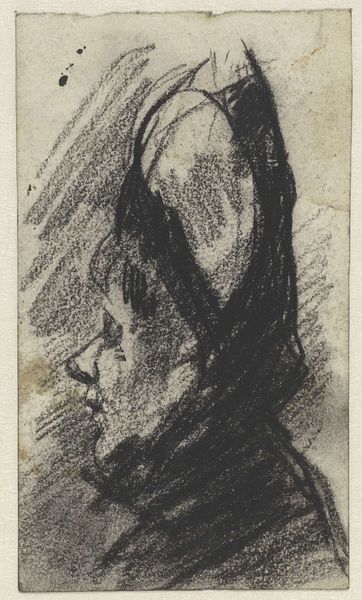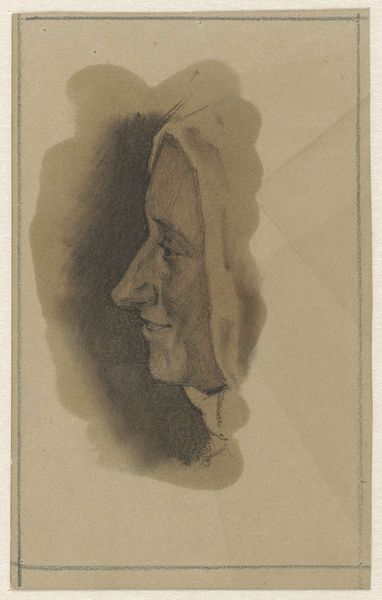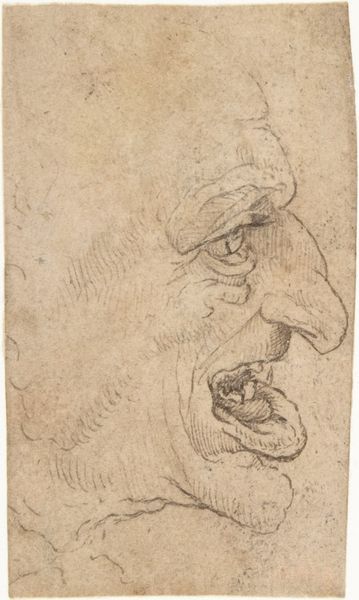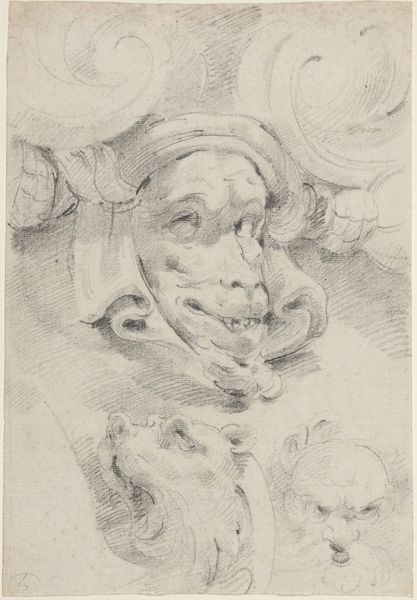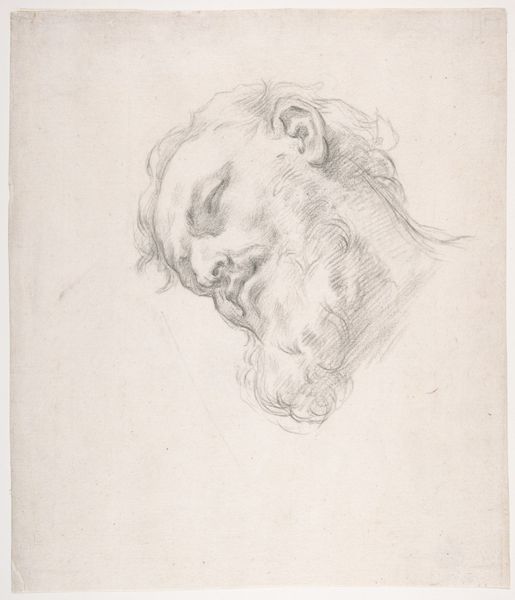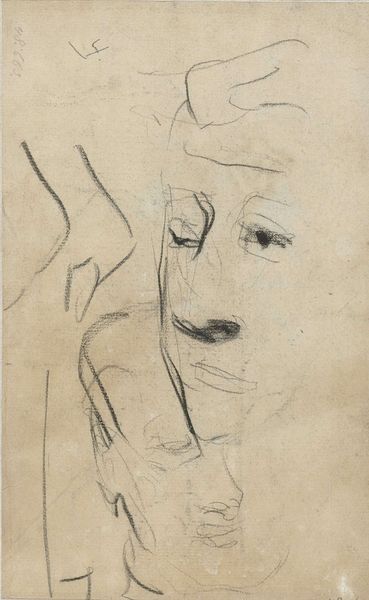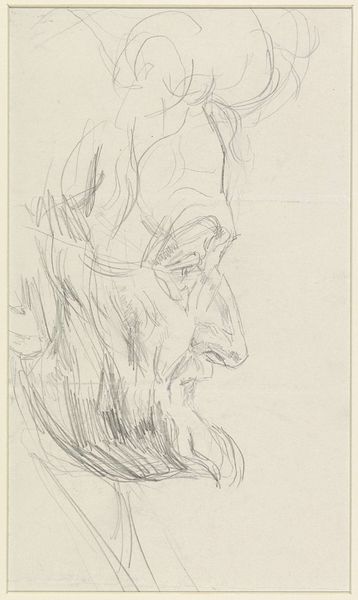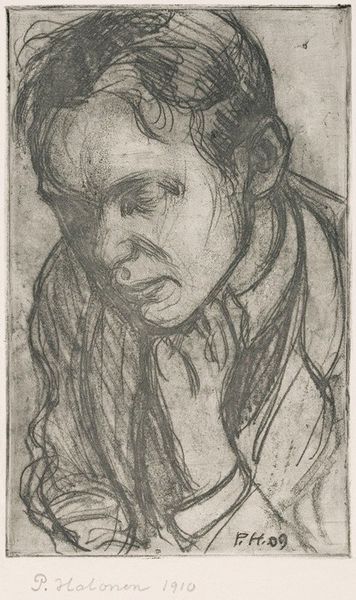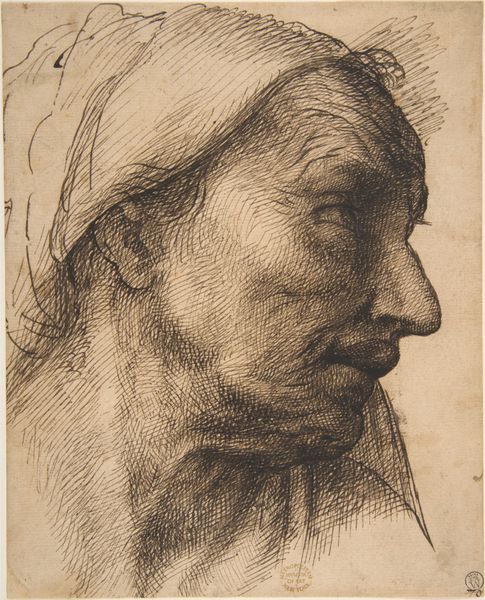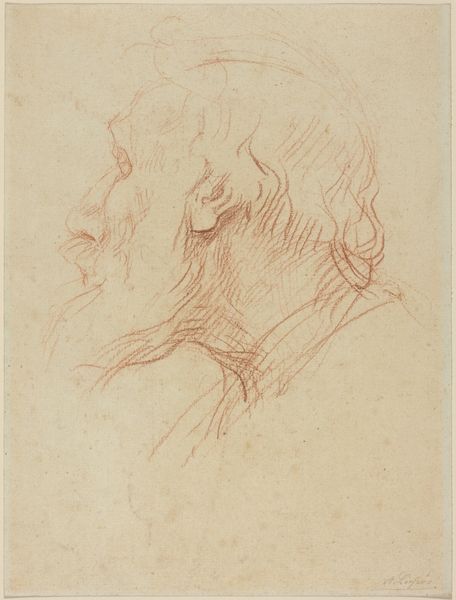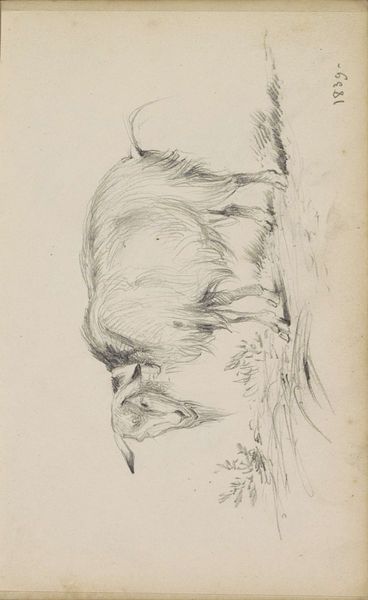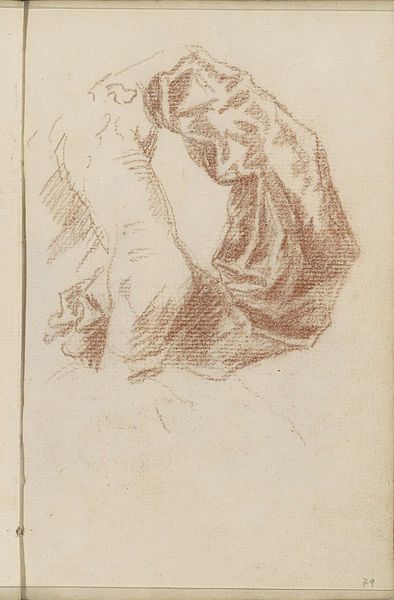
drawing, charcoal
#
portrait
#
pencil drawn
#
drawing
#
baroque
#
pencil sketch
#
charcoal drawing
#
pencil drawing
#
portrait drawing
#
charcoal
Dimensions: height 264 mm, width 203 mm
Copyright: Rijks Museum: Open Domain
Editor: This is "Manskop," a drawing in charcoal and pencil by Peter Paul Rubens, created sometime between 1587 and 1640. It's just a head, quickly rendered, but somehow incredibly expressive. What do you see in it? Curator: I see Rubens engaging with the socio-political context of his time through the study of physiognomy. The grotesque features, almost caricatured, were often employed to depict the lower classes or those deemed morally deficient. Rubens was very much a product of his era. This kind of exaggerated portraiture reflects anxieties about social order, doesn’t it? Editor: I guess I hadn't considered that. It feels like a purely aesthetic exercise, a master showing off his skill. Does that negate the possible political reading? Curator: Not necessarily. Artistic skill and social commentary are often intertwined. By choosing *what* to draw and *how* to draw it, Rubens participates in a larger visual discourse. Consider the patrons he served - were they interested in disseminating particular viewpoints through art? How did the distribution of this kind of image, as a drawing, affect its interpretation compared to a grand painting? Editor: That makes a lot of sense. The intended audience probably saw something different than we do now, separated by centuries. Perhaps we focus more on Rubens and less on what this drawing might say about the societal expectations that he was part of. Curator: Exactly. Seeing art as part of broader socio-political landscapes unveils complex intentions that simple art analysis does not show. Editor: I will definitely view art with a different historical and societal lens going forward.
Comments
No comments
Be the first to comment and join the conversation on the ultimate creative platform.
